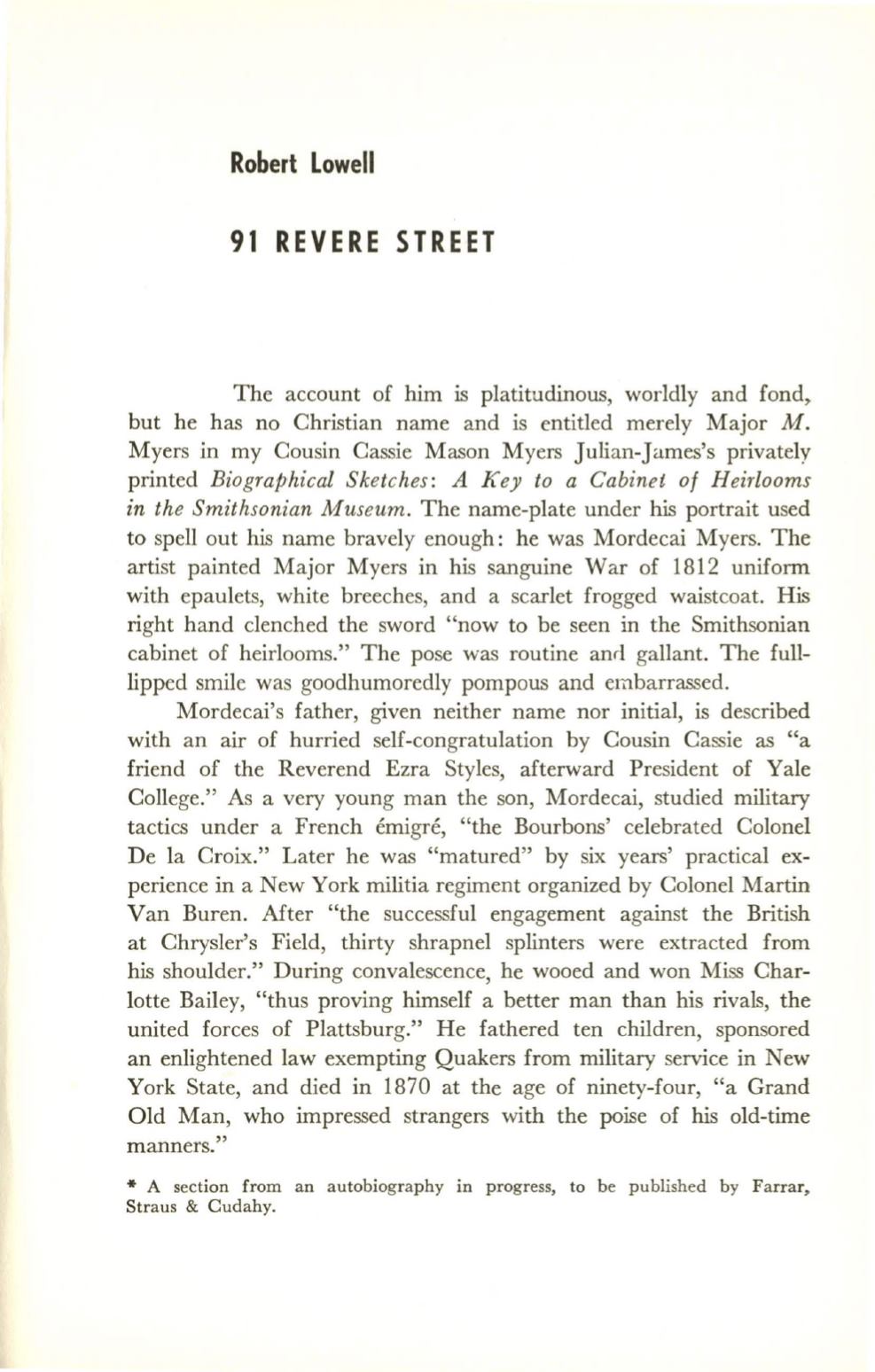
Robert Lowell
91 REVERE STREET
The account of him is platitudinous, worldly and fond,
but he has no Christian name and is entitled merely Major
M .
Myers in my Cousin Cassie Mason Myers Julian-James's privately
printed
Biographical Sketches: A Key to a Cabinet of Heirlooms
in the Smithsonian Museum.
The name-plate under his portrait used
to spell out his name bravely enough : he was Mordecai Myers. The
artist painted Major Myers in his sanguine War of 1812 uniform
with epaulets, white breeches, and a scarlet frogged waistcoat. His
right hand clenched the sword "now to be seen in the Smithsonian
cabinet of heirlooms." The pose was routine ann gallant. The full–
lipped smile was goodhumoredly pompous and embarrassed.
Mordecai's father, given neither name nor initial, is described
with an air of hurried self-congratulation by Cousin Cassie as "a
friend of the Reverend Ezra Styles, afterward President of Yale
College." As a very young man the son, Mordecai, studied military
tactics under a French emigre, "the Bourbons' celebrated Colonel
De la Croix." Later he was "matured" by six years' practical ex–
perience in a New York militia regiment organized by Colonel Martin
Van Buren. After "the successful engagement against the British
at Chrysler's Field, thirty shrapnel splinters were extracted from
his shoulder." During convalescence, he wooed and won Miss Char–
lotte Bailey, "thus proving himself a better man than his rivals, the
united forces of Plattsburg." He fathered ten children, sponsored
an enlightened law exempting Quakers from military service in New
York State, and died in 1870 at the age of ninety-four, "a Grand
Old Man, who impressed strangers with the poise of his old-time
manners."
*
A section from an autobiography in progress, to be published by Farrar,
Straus & Cudahy.


